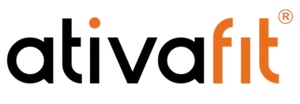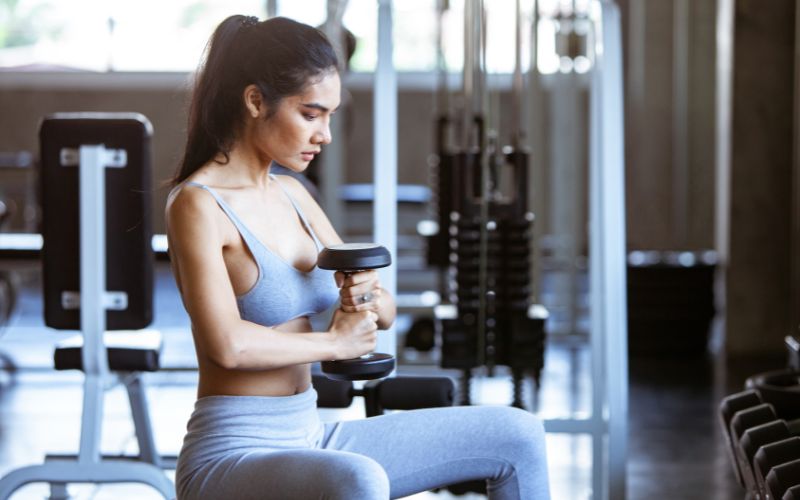Pulling exercises are an effective method of creating a well-balanced and powerful upper body, particularly for developing your shoulders, biceps, and back. Dumbbells are a versatile and affordable piece of equipment that can be used at home or in the gym, requiring minimal space and equipment.
Whether you aim to build muscle, correct poor posture, or enhance athletic ability, dumbbell pull exercises can elevate your training to the next level and deliver tangible results. Crush your workouts with 66lb adjustable dumbbells — Shop Now!

Importance of Dumbbell Exercises on the Human Body
Dumbbell workouts are a highly effective addition to any exercise program. Their versatility allows for a body workout with minimal equipment.
1. Enhances Muscle Power and Balance
Dumbbells provide for unilateral training, where each limb operates independently of the other. It aids in correcting muscle imbalances and developing stabilizer muscles, which are often overlooked in barbell or machine training. The greater the balance between sides, the less chance of injury and the better the performance.
2. Increases Range of Motion

Unlike with machines, dumbbells permit your body to move naturally. This freedom enhances joint mobility and flexibility while also supporting correct form. Exercises such as dumbbell chest presses or lunges allow for a greater range of motion, thereby engaging more muscle fibers.
3. Increases Calorie Burn and Metabolism
Adding compound dumbbell exercises, such as shoulder presses while squatting, can help increase your heart rate and activate metabolic processes. This results in greater calorie burn during and after exercise, aiding fat loss and lean muscle gain.
4. Enhances Functional Fitness
Dumbbell exercises mimic everyday activities, making them great for functional training. They improve coordination, core strength, and control. This leads to improved performance in daily tasks such as lifting, carrying, and reaching.
5. Convenient and Versatile
Dumbbells are lightweight and versatile, making them perfect for a variety of exercises at home or in the gym. With a pair of dumbbells, you can work on every major muscle group and develop infinite routines that are tailored to your fitness objectives.
10 Effective Dumbbell Pull Exercises

These dumbbell pull exercises target your back, biceps, shoulders, and core. They all contribute to improved strength, posture, and muscle definition while being both joint-friendly and simple to do at any level of fitness.
1. Single-Arm Dumbbell Row
The one-arm dumbbell row is a fundamental pulling exercise that engages the upper and middle back muscles, including the lats, rhomboids, and trapezius muscles. It's the best way to correct left-right imbalances that usually result from excessive use of the dominant arm. This exercise also helps develop core stability, as you have to resist torso rotation when performing it with one arm.
How to Do It
-
Place one knee and one hand on a bench, keeping your spine in a neutral position.
-
Hold a dumbbell in your other hand with your arm fully extended.
-
Pull the dumbbell up to your hip, squeezing your shoulder blades.
-
Slowly lower, repeating. Alternate sides.
2. Dumbbell Deadlift
Dumbbell deadlifts train the posterior chain, including the hamstrings, glutes, and lower back, while also engaging your grip and forearms. Unlike barbell deadlifts, they allow for more freedom of movement and can be gentler on the lower back. They're excellent for building foundational strength and reinforcing proper hip-hinge mechanics.
How to Do It
-
Stand with Ativafit adjustable dumbbells in front of your thighs, feet hip-width apart.
-
With a flat back, hinge at the hips to lower the dumbbells toward the floor.
-
Keep the dumbbells close to your legs, chest up.
-
Drive through your heels to stand back up.
3. Dumbbell Reverse Fly
Too often neglected, the reverse fly is essential for targeting the rear delts and upper back muscles, which counterbalance chest-dominant training. It also corrects posture and shoulder stability, a must for those who sit or slouch forward regularly. It is ideal for creating an athletic and injury-proof upper body.
How to Do It
-
Hinge at your hips with a dumbbell in each hand, back flat.
-
With your elbows slightly bent, lift your arms out to the sides.
-
Concentrate on pinching together your shoulder blades at the end of your range of motion.
-
Lower carefully and repeat.
4. Renegade Row
The renegade row exercise is a compound exercise that merges upper-body pulling power with significant core activation. When you row from a plank, your shoulders, abs, and back are called upon to stabilize your body. It's a wonderful time-saver that will improve strength and balance, particularly for functional fitness.
How to Do It
-
Begin in a plank with your hands holding dumbbells directly beneath your shoulders.
-
Row one dumbbell towards your waist, with your hips in position and core tight.
-
Lower the weight and repeat on the other side.
-
Don't twist or rock, stay tight and firm.
5. Dumbbell Shrug
The dumbbell shrug engages the upper trapezius muscles, which are instrumental for neck and upper back strength. Strong traps not only enhance shoulder function but also add to a wider, more powerful build. This is a quick and easy exercise commonly used to enhance posture and aid in heavier lifts, such as deadlifts and overhead presses.
How to Do It
-
Stand upright with dumbbells at your sides, arms extended.
-
Raise your shoulders to your ears in a controlled fashion.
-
Pause momentarily at the top, then slowly lower.
6. Dumbbell Pull-Over
Dumbbell pull-over is a clever hybrid movement that works both the lats and chest, as well as the core and shoulder mobility. It's especially effective at developing upper-body strength and enhancing breathing mechanics, as it stretches the rib cage and thoracic spine, making it an excellent finishing exercise for upper-body routines.
How to Do It
-
Lie flat on a bench and hold one Ativafit 88 Lbs dumbbell in both hands over your chest.
-
Slowly lower the dumbbell in an arc behind your head while keeping your arms slightly bent.
-
Hold when you experience a stretch through your chest and lats.
-
Return the weight to its original position with a smooth and controlled movement.
7. Upright Row
Upright rows are great for engaging the trapezius and deltoid muscles. This exercise targets the upper shoulder and neck, making your body appear more powerful. It even builds up the pulling mechanics of your shoulders and arms, which is critical for lifting and carrying.
How to Do It
-
Stand straight, holding dumbbells in front of your thighs with palms facing you.
-
Pull dumbbells up toward your chin, with elbows first.
-
Hold close to your body and terminate when your elbows reach shoulder height.
-
Pause for a moment, then lower under control.
8. Bent-Over Scapular Row
This subtle but effective variation focuses on scapular retraction (movement of the shoulder blades), an important element for shoulder health, good posture, and back strength. It's frequently employed in rehabilitation or warm-ups to correct poor posture or prevent shoulder impingement.
How to Do It
-
Using a dumbbell in each hand, bend at the hips with your back flat.
-
Allow your arms to hang freely.
-
Without flexing your elbows, squeeze your shoulder blades together, raising the dumbbells ever so slightly.
-
Hold for a moment and slowly lower.
9. Dumbbell Bent-Over Face Pull
The face pull bent over is great for building the rear delts and upper traps, particularly for counterbalancing push-dominated programs (such as bench presses). It strengthens the weaker stabilizer muscles in the area around the shoulders, thereby decreasing the likelihood of shoulder injuries.
How to Do It
-
Bend at the hips, back against the bench, dumbbells in both hands with palms facing forward.
-
Pull the weight up toward your face, keeping your elbows wide out to the sides.
-
Squeeze together the shoulder blades at the peak of movement.
-
Slowly return to the initial position.
10. Dumbbell High Pull
This dynamic, explosive dumbbell workout develops pulling power, speed, and coordination. It’s often used in athletic training to build full-body strength with a focus on traps, rear delts, and biceps. Think of it as a bridge between strict strength work and explosive conditioning.
How to Do It
-
Stand with feet shoulder-width apart, dumbbells in front of your thighs.
-
Dip slightly at the knees and explode upward, pulling the dumbbells to chest level.
-
Elbows should initiate the movement, coming above your wrists.
-
Come down under control and reset before repeating.
Conclusion
Adding dumbbell pull exercises to your workout routine is a smart strategy for developing strength, improving posture, and engaging key upper-body muscle groups. Not only do these movements improve performance and appearance, but they also promote joint health and functional fitness.
The good news? You can perform them almost anywhere with just dumbbells. So, get set to pull your weight and incorporate these exercises into your training routine today.
Frequently Asked Questions
Can I do dumbbell pull exercises if I am a beginner?
Yes! Dumbbell pull exercises are versatile and easy to modify for beginners. Begin with lighter weights and focus on form before increasing intensity.
What muscles do dumbbell pull exercises work?
These exercises primarily target your back, biceps, shoulders, and core. They are responsible for building a well-balanced, strong upper body.

